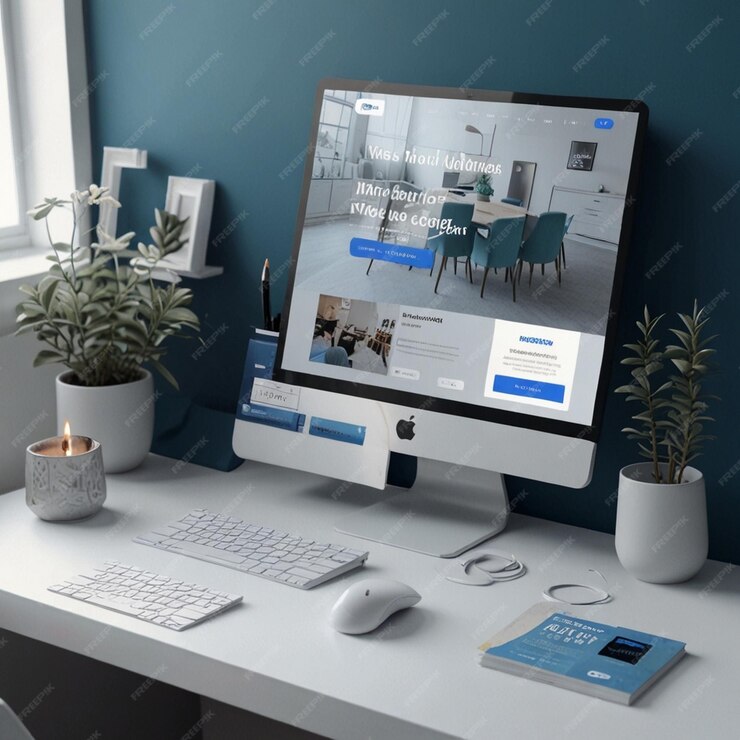Table of Contents
- Introduction
- The Significance of Website Design
- Overview of Doctor Barns Tech
- Understanding User Experience (UX)
- Defining User Experience
- The Importance of UX in Web Design
- Key Elements of Website Design that Impact UX
- Visual Appeal
- Navigation
- Responsiveness
- Load Time
- Content Structure
- The Role of Color and Typography in UX
- The Psychology of Color
- Choosing the Right Fonts
- The Impact of Layout and White Space on User Experience
- Balancing Content and Space
- How Layout Affects Readability
- The Importance of Mobile Optimization
- Trends in Mobile Usage
- How Doctor Barns Tech Facilitates Mobile-Responsive Design
- Accessibility in Web Design
- What is Web Accessibility?
- Best Practices for Inclusive Design
- The Influence of Images and Multimedia
- Engaging Users with Visual Content
- The Role of Videos in Enhancing UX
- User Feedback: The Cornerstone of Effective Design
- Gathering User Insights
- Iterative Design and Its Benefits
- Case Studies: Effective Website Design and Its Impact on UX
- Analyzing Successful Websites
- Lessons Learned
- Tools and Software for Designing with UX in Mind
- Introduction to Popular Design Tools
- Why Doctor Barns Tech Stands Out
- Measuring User Experience
- Key Metrics to Evaluate UX
- Tools for Tracking User Behavior
- Future Trends in Web Design and UX
- Predictions for the Next Decade
- The Role of AI and Personalization
- Conclusion
- Recap of Key Points
- The Value of Doctor Barns Tech for UX-focused Design
- FAQs
- What is user experience (UX) in web design?
- How does website design affect user retention?
- What role does mobile optimization play in UX?
- Why is accessibility important in web design?
- How can I improve my website’s UX?
Introduction
The Significance of Website Design
Have you ever landed on a website that immediately made you want to leave? Perhaps it was cluttered, slow, or just plain confusing. The truth is, website design is not merely about aesthetics; it’s a powerful tool that shapes user experience (UX). In today’s digital world, where first impressions are often made in mere seconds, understanding how design influences user behavior is crucial.
When users visit a website, they expect a seamless experience. A well-designed site guides users effortlessly toward their goals, whether it’s making a purchase, signing up for a newsletter, or simply finding information. Conversely, a poorly designed site can frustrate users, leading to high bounce rates and lost opportunities.
Think of a website as a storefront. Just as a well-arranged shop attracts customers, a well-designed website invites users to explore and engage. If your website is visually appealing and easy to navigate, users are more likely to stay and interact.
Overview of Doctor Barns Tech
Enter Doctor Barns Tech, an innovative platform that empowers users to create websites that not only look fantastic but also deliver exceptional user experiences. With features designed specifically for enhancing UX, Doctor Barns Tech simplifies the design process, making it accessible to everyone—from beginners to seasoned professionals.
Doctor Barns Tech offers an array of customizable templates, intuitive drag-and-drop tools, and built-in optimization features that ensure your website meets modern standards for design and functionality. By incorporating these elements, users can create stunning websites that capture attention and drive engagement.
Understanding User Experience (UX)
Defining User Experience
User experience encompasses every aspect of the user’s interaction with a website. It includes how users feel when navigating the site, how easily they can find information, and how effectively they can complete tasks. Good UX is like a well-choreographed dance; every element works together to create a harmonious experience.
Imagine attending a concert where everything flows seamlessly. The lights, sound, and performance come together to create an unforgettable experience. In the same way, a well-designed website harmonizes various elements to provide users with a smooth and enjoyable journey.
The Importance of UX in Web Design
Why is UX so critical? Well, studies show that websites with superior user experiences tend to have lower bounce rates, higher conversion rates, and better customer satisfaction. When users enjoy their experience on a site, they are more likely to return, recommend it to others, and engage with its content.
To put it in perspective, consider this: a one-second delay in page load time can lead to a 7% reduction in conversions. This highlights the direct link between UX and business success. By investing in a user-friendly website design, businesses can boost customer loyalty and increase revenue.
Key Elements of Website Design that Impact UX
Visual Appeal
The visual design of a website is often the first thing users notice. A clean, aesthetically pleasing site not only attracts users but also keeps them engaged. Elements like color schemes, images, and layouts all contribute to the visual appeal.
Imagine walking into a restaurant with an inviting ambiance versus one that’s dimly lit and cluttered. Which one would make you want to stay longer? The same principle applies to websites. A visually appealing site creates a welcoming atmosphere that encourages exploration.
Navigation
Have you ever found yourself frustrated while trying to navigate a website? Poor navigation can drive users away. A well-organized navigation menu allows users to find what they’re looking for quickly and effortlessly. Consider how Doctor Barns Tech offers customizable navigation options to enhance user journeys.
A logical navigation structure—clear categories, easy-to-find menus, and search functionality—makes a website intuitive. It’s like having a well-marked map guiding users through a vast landscape.
Responsiveness
In an era dominated by mobile devices, responsive design is essential. A website that adapts to different screen sizes provides a seamless experience, whether users are on a desktop, tablet, or smartphone. Doctor Barns Tech excels in mobile-responsive design, ensuring users have a consistent experience across devices.
Statistics reveal that mobile traffic accounts for over half of all internet usage. If your website isn’t mobile-friendly, you risk alienating a significant portion of your audience. Responsive design isn’t just a trend; it’s a necessity.
Load Time
Did you know that users expect a webpage to load in two seconds or less? Slow-loading websites can lead to frustration and abandonment. By optimizing load times, you can significantly enhance user experience and retain visitors. Doctor Barns Tech includes built-in features to optimize loading speed.
Consider this analogy: A website is like a store opening its doors. If it takes too long to let customers in, they’ll leave before even stepping inside. Fast load times ensure users can access your content without delay, keeping them engaged.
Content Structure
The way content is structured on a website impacts readability and user engagement. Clear headings, bullet points, and well-organized information make it easier for users to scan and understand content. When content is presented effectively, users are more likely to stay and explore further.
Think of content structure like a well-organized library. If books are easy to find and categorized logically, patrons are more likely to linger and browse. On the contrary, a disorganized library can deter readers from seeking out information.

The Role of Color and Typography in UX
The Psychology of Color
Color isn’t just about aesthetics; it influences emotions and perceptions. Different colors evoke different feelings. For example, blue can instill trust, while red can create urgency. Understanding color psychology allows designers to evoke specific responses from users, enhancing their overall experience.
Consider this: A website for a luxury brand may use rich golds and deep blacks to convey elegance, while a tech startup might opt for fresh blues and greens to signify innovation. The right color palette not only reinforces branding but also guides users’ emotions.
Choosing the Right Fonts
Typography plays a crucial role in web design. The right font choice can enhance readability and reinforce brand identity. Legible fonts that align with your website’s tone can make a significant difference in user engagement.
Imagine reading a book with intricate, cursive fonts. While they may be beautiful, they can also be challenging to read. Similarly, web fonts should prioritize legibility, ensuring users can consume content without straining their eyes.
The Impact of Layout and White Space on User Experience
Balancing Content and Space
A cluttered layout can overwhelm users, while ample white space creates breathing room, making content easier to digest. Effective use of white space helps to guide users’ eyes to important elements, improving navigation and engagement.
White space is not just empty space; it’s a design tool that enhances focus. Think of a piece of art. The negative space surrounding the main subject draws attention to it, creating a powerful impact. In web design, white space plays a similar role, directing users’ attention to essential information.
How Layout Affects Readability
An intuitive layout enhances readability. Logical content flow, clear headings, and strategic placement of images all contribute to how easily users can consume information. Doctor Barns Tech offers templates designed to maximize readability and user engagement.
Imagine reading a long article without headings or breaks. The lack of structure can quickly lead to fatigue and disinterest. A well-structured layout, on the other hand, invites users to read on and engage with the content.
The Importance of Mobile Optimization
Trends in Mobile Usage
As mentioned earlier, mobile traffic dominates internet usage. With more users accessing websites via smartphones, optimizing for mobile is no longer optional. If your website isn’t mobile-friendly, you’re likely missing out on valuable traffic and potential conversions.
How Doctor Barns Tech Facilitates Mobile-Responsive Design
Doctor Barns Tech specializes in helping users create mobile-optimized websites effortlessly. Its platform includes features that automatically adjust layouts, images, and content for various devices. By prioritizing mobile design, Doctor Barns Tech ensures that users can reach their audience wherever they are.
Accessibility in Web Design
What is Web Accessibility?
Web accessibility refers to designing websites that can be used by everyone, including people with disabilities. An accessible website considers users who may have visual impairments, hearing disabilities, or cognitive challenges.
Best Practices for Inclusive Design
Implementing best practices for accessibility ensures that your website can reach the widest possible audience. This includes providing alt text for images, using descriptive link text, and ensuring color contrast meets standards. Doctor Barns Tech advocates for accessible design, enabling users to create inclusive websites easily.
Think of accessibility like providing ramps in a building. Just as ramps allow individuals with mobility challenges to enter, accessible web design allows everyone to navigate your website. Making your website accessible not only broadens your audience but also demonstrates your commitment to inclusivity.

The Influence of Images and Multimedia
Engaging Users with Visual Content
Visual content, such as images and infographics, can significantly enhance user engagement. People are naturally drawn to visuals, making them an effective way to communicate information quickly. Websites that incorporate high-quality images often see improved user retention and interaction.
The Role of Videos in Enhancing UX
Videos are another powerful tool for engagement. They can simplify complex topics, provide tutorials, or showcase products in action. Including video content on your website can capture users’ attention and keep them on the page longer.
Consider this: A website that uses a video to explain a product can convey information more effectively than text alone. Users can see the product in action, leading to a more informed decision-making process.
User Feedback: The Cornerstone of Effective Design
Gathering User Insights
User feedback is invaluable in web design. It provides insights into what users like and dislike, helping designers make informed decisions. Surveys, usability testing, and analytics can all contribute to understanding user needs.
Iterative Design and Its Benefits
Design is an ongoing process. Using feedback to iterate and improve your website ensures it evolves with user expectations. Doctor Barns Tech encourages users to seek feedback and make adjustments, fostering a culture of continuous improvement.
Think of this process like gardening. You plant seeds (your initial design), but you must tend to them (incorporate feedback) to see them flourish. Iterative design helps ensure that your website remains relevant and user-friendly.
Case Studies: Effective Website Design and Its Impact on UX
Analyzing Successful Websites
Looking at successful websites can provide inspiration and insights into effective design. Consider websites that have optimized their UX through thoughtful design choices.
- Case Study 1: Amazon
- Amazon’s straightforward navigation and personalized recommendations enhance user experience and keep customers returning.
- Case Study 2: Airbnb
- Airbnb’s clean layout and engaging visuals create an inviting atmosphere for users seeking accommodations.
Lessons Learned
What can we learn from these examples? Consistent branding, intuitive navigation, and engaging visuals are key elements that contribute to effective website design.
Tools and Software for Designing with UX in Mind
Introduction to Popular Design Tools
Several tools and software options can assist in creating user-friendly websites. From design software to analytics tools, having the right resources can make a significant difference.
Why Doctor Barns Tech Stands Out
Doctor Barns Tech excels in providing an all-in-one solution for website design, combining ease of use with powerful features. Its intuitive platform allows users to create stunning websites without needing advanced coding skills.
Measuring User Experience
Key Metrics to Evaluate UX
To understand how well your website is performing, it’s essential to measure user experience. Key metrics to consider include:
- Bounce Rate: The percentage of visitors who leave after viewing only one page.
- Average Session Duration: How long users spend on your website.
- Conversion Rate: The percentage of visitors who complete desired actions (e.g., purchases, sign-ups).
Tools for Tracking User Behavior
Several tools can help you track these metrics and gather insights into user behavior. Google Analytics, heatmap tools, and user feedback platforms are excellent resources for evaluating UX.
Future Trends in Web Design and UX
Predictions for the Next Decade
As technology evolves, so do user expectations. Trends such as AI-driven personalization, voice search optimization, and immersive experiences (like AR and VR) are likely to shape the future of web design.
The Role of AI and Personalization
AI is already playing a significant role in enhancing user experiences. Personalized recommendations, chatbots, and tailored content can create a more engaging and satisfying journey for users.

Conclusion
Recap of Key Points
Website design is a critical factor in shaping user experience. From visual appeal and navigation to mobile optimization and accessibility, every aspect contributes to how users interact with a site. By prioritizing user experience, businesses can foster customer loyalty and drive success.
The Value of Doctor Barns Tech for UX-focused Design
As you embark on your web design journey, consider leveraging the capabilities of Doctor Barns Tech. With its user-friendly tools and features designed to enhance UX, Doctor Barns Tech is your partner in creating websites that captivate and engage.
FAQs
What is user experience (UX) in web design?
User experience (UX) refers to how users feel when interacting with a website. It encompasses aspects like usability, accessibility, and overall satisfaction. Good UX ensures that users can navigate easily and find what they need.
How does website design affect user retention?
Effective website design enhances user experience, encouraging visitors to stay longer and return. A well-structured site with engaging visuals and intuitive navigation fosters loyalty and repeat visits.
What role does mobile optimization play in UX?
Mobile optimization ensures that websites function effectively on various devices, providing a seamless experience for users. With a growing number of users accessing websites via smartphones, mobile-friendly design is essential.
Why is accessibility important in web design?
Accessibility ensures that all users, including those with disabilities, can navigate and interact with a website. It broadens the audience and demonstrates a commitment to inclusivity.
How can I improve my website’s UX?
Improving UX involves various strategies, including optimizing load times, enhancing navigation, ensuring mobile responsiveness, and gathering user feedback. Tools like Doctor Barns Tech can assist in implementing these improvements effectively.


